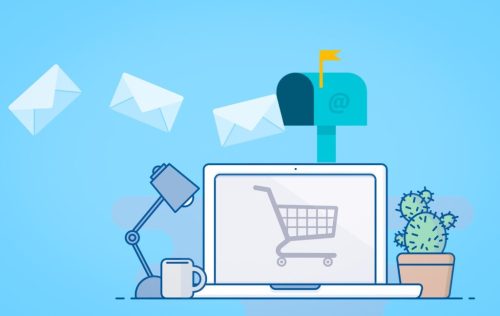Email marketing: old hat? Not at all! There is hardly a more efficient method of creating awareness, converting one-time customers into existing customers, and actively shaping the customer journey. In short: professional email marketing is the supreme discipline for anyone who makes sales online.
The bad news is that email marketing is only successful if it is well done. The good news: It’s no longer difficult, and it doesn’t take a computer scientist to do it. With email marketing templates, any PC or MAC user can do it. Using such templates, everything fits structure, responsiveness, trust, and visibility. And the wow effect, for example, with animated image sequences, can be added quickly and easily by an agency. The virtual “letter” beats the paper one by far.
With the quality of e-mail marketing improving, it’s not surprising that this tool converts directly: Over a third of users have already purchased directly from an e-mail. Without first “googling” their way into a store.
The effectiveness of e-mail marketing is only surprising at first glance. At a second glance, it is highly plausible. Because, of course, acceptance and trust are no longer hurdles with the self-subscribed newsletter. If the latter is even individualized and no longer appears as a virtual mass-printed matter but addresses users by name and deals with topics that interest them, it is clear that e-mail marketing beats display advertising.
With a dedicated email marketing tool, this can be done quite easily.
Translated with www.DeepL.com/Translator (free version)
Custom newsletters can do more!
Well-crafted newsletters do not mean anonymous mass mailings that begin with “Dear Customer…” and convey content that does not interest the recipients in the slightest. The border to spam mail is then quickly crossed, achieving the opposite of what good e-mail marketing wants.
Successful e-mail marketing thrives on individuality and – in its extreme form – on a personal approach. This should not be limited to simply “putting over” one’s corporate identity using an existing template. It is much more a matter of compiling at least segment-specific content. For example, sending a mailing with an 0815 quartz watch to a well-known mechanical watch lover makes no sense.
In extreme cases, individualization goes as far as a personal address and content that builds on the known customer history. Today, this is also possible on a large scale using appropriate CRM software tools.
Testing and support: A/B tests & Co. – knowledge instead of belief
As with stage appearances, a test run is also recommended for e-mail marketing, in this case, so-called A/B tests or split tests.
This not only helps to find out whether the mailing works technically but also which of the possible variants perform best. This can be measured: With open rates, clickthrough rates, or conversion rates. How many users open the email (because it seems interesting), how many click on where the sender wants them to go (usually to the store), and how many make a purchase?
Unsubscribes should also be kept in mind: These come from content that is not interesting, and these should be avoided. The same applies to so-called bounce-backs, which can be caused by poor address quality in the CRM database.
Those who use the insights that arise in real-time will achieve high quality in email marketing as part of a continuous improvement process. This makes support almost superfluous. Marketers who offer this on top and support their customers in word and deed are clearly among the winners in the direct marketing arena.
Saving tests are not recommended. After all, why are you sure that customers will respond to your approach? With A/B email testing, you replace “belief” with “knowledge.” And make sales. You even know beforehand.












